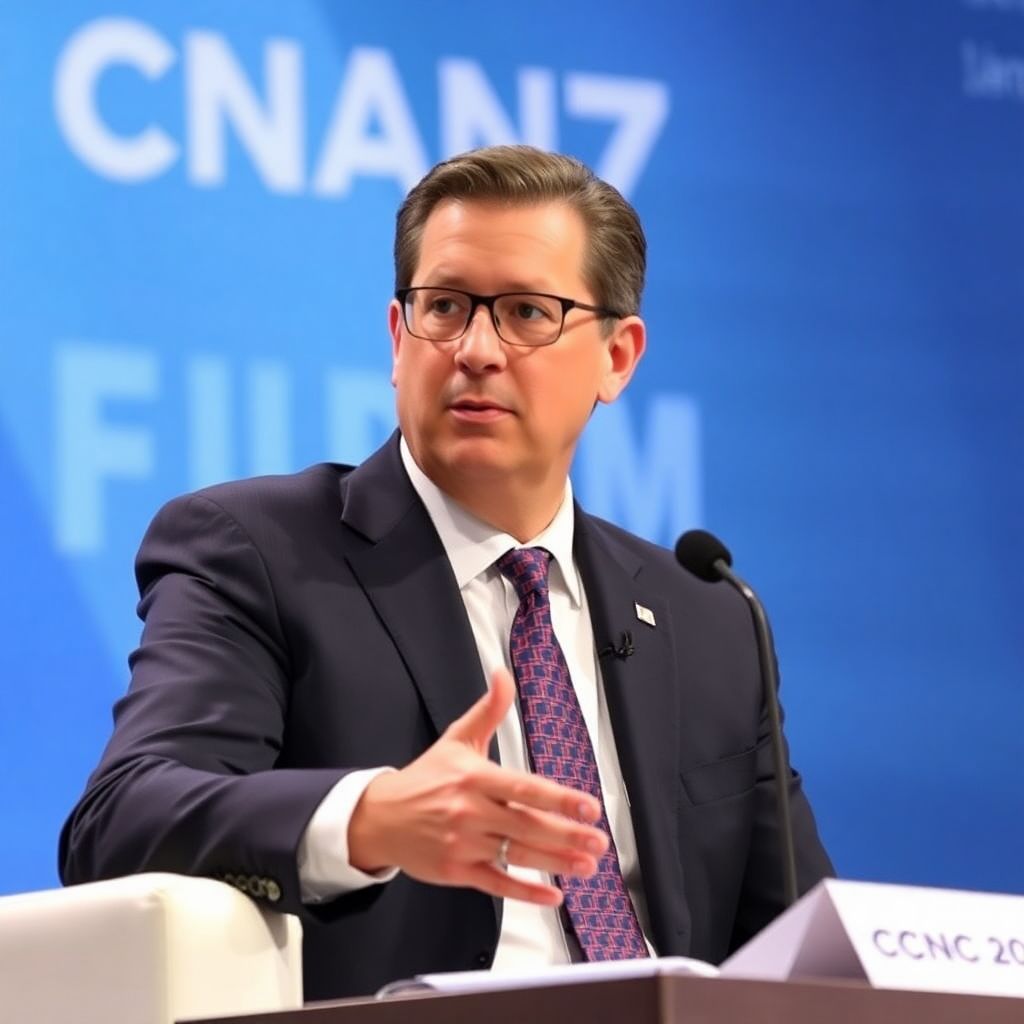Federal Reserve Governor Stephen Miran has emphasized the urgent necessity for aggressive interest rate cuts as mounting trade tensions between the United States and China threaten to destabilize economic growth. In a recent appearance at the Invest in America Forum hosted by CNBC, Miran stressed that the central bank must act decisively and swiftly to mitigate rising risks in the current economic environment.
According to Miran, the deteriorating relationship between the world’s two largest economies has reintroduced significant uncertainty into financial markets—an uncertainty he previously believed had subsided. “I had assumed that the worst of the uncertainty had passed, and that justified a more optimistic view on economic growth. However, recent developments, particularly China reneging on prior trade commitments, have reignited those concerns,” he stated.
Miran is advocating for a substantial reduction in the federal funds rate—specifically, a cut of 1.25 percentage points in the near term. This proposed cut would be in addition to the 25 basis point reduction already implemented by the Federal Reserve following its September Federal Open Market Committee (FOMC) meeting.
The next FOMC meeting, scheduled for October 28–29, is now under heightened scrutiny from investors and analysts, many of whom expect further rate reductions. Another meeting in December may also bring additional easing, especially as the economic outlook becomes more fragile due to geopolitical instability and policy uncertainty.
Miran’s call for deeper cuts aligns with a broader shift in tone from the Federal Reserve. On October 14, Fed Chair Jerome Powell indicated a more accommodative stance, which sparked rallies across both equity and cryptocurrency markets. This dovish pivot is seen as a reaction not only to trade-related concerns but also to a broader slowdown in global economic activity.
The recent U.S. government shutdown has further complicated the situation, leading to a temporary halt in the release of key economic indicators. This “data blackout” has made it more difficult for policymakers to assess the economy’s true condition, increasing the risk of delayed or inadequate policy responses.
Miran warns that, in the absence of clear data and amid heightened global tensions, the Fed must err on the side of caution by taking preemptive action. “The risks are tilted to the downside, and it’s the responsibility of central bankers to respond proactively,” he declared.
The urgency Miran conveys is rooted in concerns over slowing business investment, reduced consumer confidence, and volatility in financial markets. He argues that lowering interest rates significantly and quickly could help cushion the blow from external shocks, stabilize market expectations, and support domestic demand.
His recommendation for a 1.25% rate cut is unusually bold and reflects a growing sentiment among some policymakers that gradualism may no longer be effective in the current environment. By moving assertively, the Fed could send a strong signal to markets and help prevent a deeper economic slowdown.
The implications of such a move are wide-reaching. Lower interest rates generally reduce borrowing costs for businesses and households, potentially stimulating spending and investment. However, they also carry risks—such as fueling asset bubbles or undermining the value of the dollar—which the Federal Reserve must weigh carefully.
Critics of aggressive rate cuts argue that monetary policy alone cannot resolve issues stemming from trade disputes, and that fiscal measures or diplomatic engagement may be more appropriate. Still, with no immediate resolution to U.S.-China tensions in sight, the Fed may be left with little choice but to act.
In addition to economic concerns, the financial sector is watching closely how the Fed’s decisions affect investor sentiment. Equity indices and cryptocurrencies have shown sensitivity to policy signals, with positive momentum often following hints of monetary easing.
Beyond the immediate term, Miran’s position also raises questions about the Fed’s long-term strategy. Should the central bank exhaust its rate-cutting capacity now, it could find itself with limited tools in the event of a recession. Some economists advocate for alternative measures, such as quantitative easing or forward guidance, to supplement rate cuts.
As the October FOMC meeting approaches, the pressure on the Federal Reserve is mounting. Market participants will be looking for clear communication, decisive action, and a coherent strategy for navigating the complex interplay of trade policy, fiscal uncertainty, and global economic conditions.
Ultimately, Miran’s call serves as a stark reminder of the stakes involved. With geopolitical instability threatening to derail an already fragile recovery, the Federal Reserve faces one of its most critical decision points in recent years. Whether or not Miran’s proposed 1.25% cut materializes, it is evident that the balance between risk management and monetary stability will define the Fed’s path forward.

